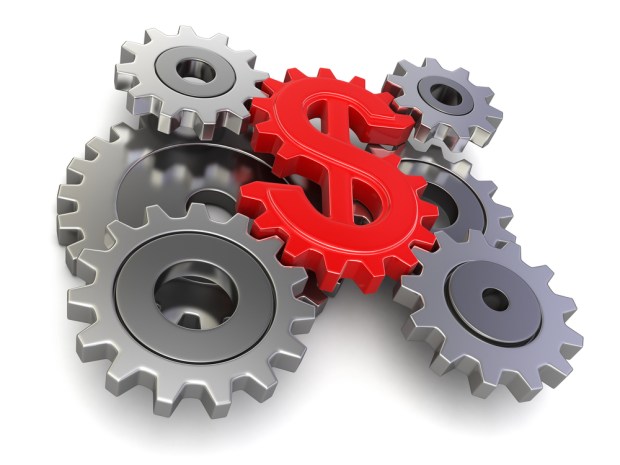Mastercard President On How Networks Drive Innovation

From bits of paper receipts to bytes across POS, payments have scaled technological heights globally. At an Innovation Project 2017 fireside chat, Mastercard president of Global Products and Solutions Gary Flood told PYMNTS’ Karen Webster that the only constant across networks is change.
The saying goes that change is a constant. Change within technology is a constant. And as networks expand across payments players and global reach, change in payments technology is also a constant.
In a fireside chat at Innovation Project 2017, PYMNTS’ Karen Webster and Gary Flood, president of Mastercard, focused on “the role of the network in delivering the future.” Flood told Webster that several moving pieces in payments are coming together to focus on the consumer experience — specifically on a “seamless, frictionless” consumer experience.
Noting an appearance on CNBC back in 2010, Flood recalled that he was asked, “How long until mobile payments? So, I said, ‘Five years.’” Against that backdrop, he said, some major hallmarks about mobile payments have advanced, “but there is a long way to go. There are some compelling new choices, and there are a lot of really smart people” bearing down on making the “consumer’s day easier.”
The overarching rule, though, as he noted, is “adoption matters.” Technology can be chosen and deployed all over the world, but unless people use it, and frequently, “it’s like one hand clapping; it’s not very helpful.”
Webster noted how Mastercard wants consumers to put its product inside [third-party] wallets, with an eye on the account being accessible whenever and wherever the consumer desires. The relationship is one where, as Flood described it, “this whole [question of] ‘whose wallet is it’ will play out over a long period of time,” even while consumers remain extremely comfortable with the financial institutions and the relationships they have in place with those institutions. Stakeholders in the relationships between consumers and wallets and FIs can include merchants and even government agencies.
The end result, he said, will be “a multitude of products” that will focus on the consumer and be driven by use cases to deliver a bank-enabled and digital consumer experience, said Flood. QR codes or order-ahead services such as Qkr, said the executive, can streamline the experience for both merchants and banks.
“I would look at something and break it down by who is actually going to provision or service or provide. I’d say, ‘What is the experience we want at the end of the day?’ and ‘What problem are we solving?’ and then when you design it, you have to design it with all those folks in mind.”
Looking across more than 30 years at Mastercard with a front row view of innovation, Flood stated that several trends across the world and payments technology have evolved drastically. Terminal deployment, he said by way of example, has moved from paper receipt to electronic data capture to new initiatives at the point of sale. Another trend has been globalization or, to define it a bit more sharply, “borderless,” as the executive noted, where “the borderless nature of the network created an awful lot of innovation in different parts of the world that pushed the system.”
And in terms of international focus, as he stated, Mastercard has itself evolved from three decades ago, when there were three or four employees “in a different elevator bank” to one where thousands of employees work overseas.
And digitization has changed online commerce, stated Flood, where once that arena had been dominated by transactions where “you would call up on the telephone, provide your account number.” Now commerce is borderless, channel-agnostic and inclusive of a myriad of product types (and sellers and buyers).
Opportunity pockets exist: Flood stated that the firm put in place a goal in 2014 for there to be 500 million new users in the financial system by 2020; 310 million of those new additions have been realized to date. Those numbers have come about through partnerships with governments, financial institutions and other entities working in tandem to leverage technology for financial inclusion. India remains a strong example of a country embracing the move toward a cashless society driven by technology and financial inclusion.
The idea of payments networks and stakeholders acting in tandem with governments can bring societal benefits, noted Webster, and Flood concurred. Herein lies the juxtaposition of “old” technology with “new” technology, where consumers can, for example, check the status of their benefits and electronic distribution of those benefits.
In discussing Mastercard’s “homegrown initiatives,” some of them compete with what other developers are working on outside the company. Development cannot be done in a vacuum, and, as Flood noted, “We are not a bank … We are not going direct to consumers, direct to merchants … We are not an acquirer.”
When building such technologies, Mastercard must develop models based on the people who want to distribute them. The biggest issue that bedevils firms, he surmised, is scale.
The key for Mastercard is to leverage the digital payments operations and innovation labs to do that, and, as he stated, the company works extensively with third parties. Firms come in, pitch and perhaps gather investments and expertise from Mastercard.
“We are not an insulated firm,” he said. “We are constantly looking on the outside.”
